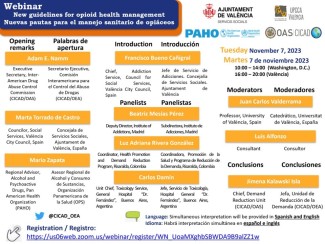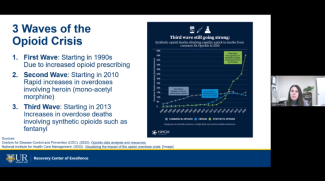opioids
Frontal White Matter Changes and Craving Recovery in Inpatients With Heroin Use Disorder
Abstract Importance Amidst an unprecedented opioid epidemic, identifying neurobiological correlates of change with medication-assisted treatment of heroin use disorder is imperative. White matter impairments in individuals with heroin use...
Factors Associated With the Availability of Medications for Opioid Use Disorder in US Jails
Abstract Importance In 2023, more than 80 000 individuals died from an overdose involving opioids. With almost two-thirds of the US jail population experiencing a substance use disorder, jails present a key opportunity for providing...
Pharmacological and Behavioral Treatment of Opioid Use Disorder
Abstract Objective: Opioid use disorder (OUD) in the United States has surged, with an estimated 2.5 million needing treatment. The aim of this article is to provide a clinical overview of the key pharmacological and behavioral treatments...
Tools to implement measurement-based care (MBC) in the treatment of opioid use disorder (OUD): toward a consensus
Abstract Background The prevalence and associated overdose death rates from opioid use disorder (OUD) have dramatically increased in the last decade. Despite more available treatments than 20 years ago, treatment access and high...
New guidelines for the health management of opiates
The Inter-American Commission on Drug Abuse Control (CICAD), the Valencia, Spain City Council, and the Pan-American Health Organization (PAHO) invite you to join the webinar “New guidelines for the health management of opiates” this Tuesday, November 7, starting at 10:00 (Washington, DC time).

Synthetic Opioids: Navigating a Changing Landscape in the Treatment of Opioid Use Disorder
This 35-minute module focuses on how primary care providers can navigate the changing landscape of opioid use disorder in relation to synthetic opioids.

Use of Medication for Opioid Use Disorder Among Adults With Past-Year Opioid Use Disorder in the US, 2021
Discussion Despite guidelines recommending MOUD, approximately 1 in 5 adults with past-year OUD received any MOUD. Furthermore, some groups were substantially less likely to receive MOUD, in particular Black adults, women, those unemployed...
Fentanyl DrugFacts
Fentanyl is a powerful synthetic opioid that is similar to morphine but is 50 to 100 times more potent. It is a prescription drug that is also made and used illegally. Like morphine, it is a medicine that is typically used to treat patients...
